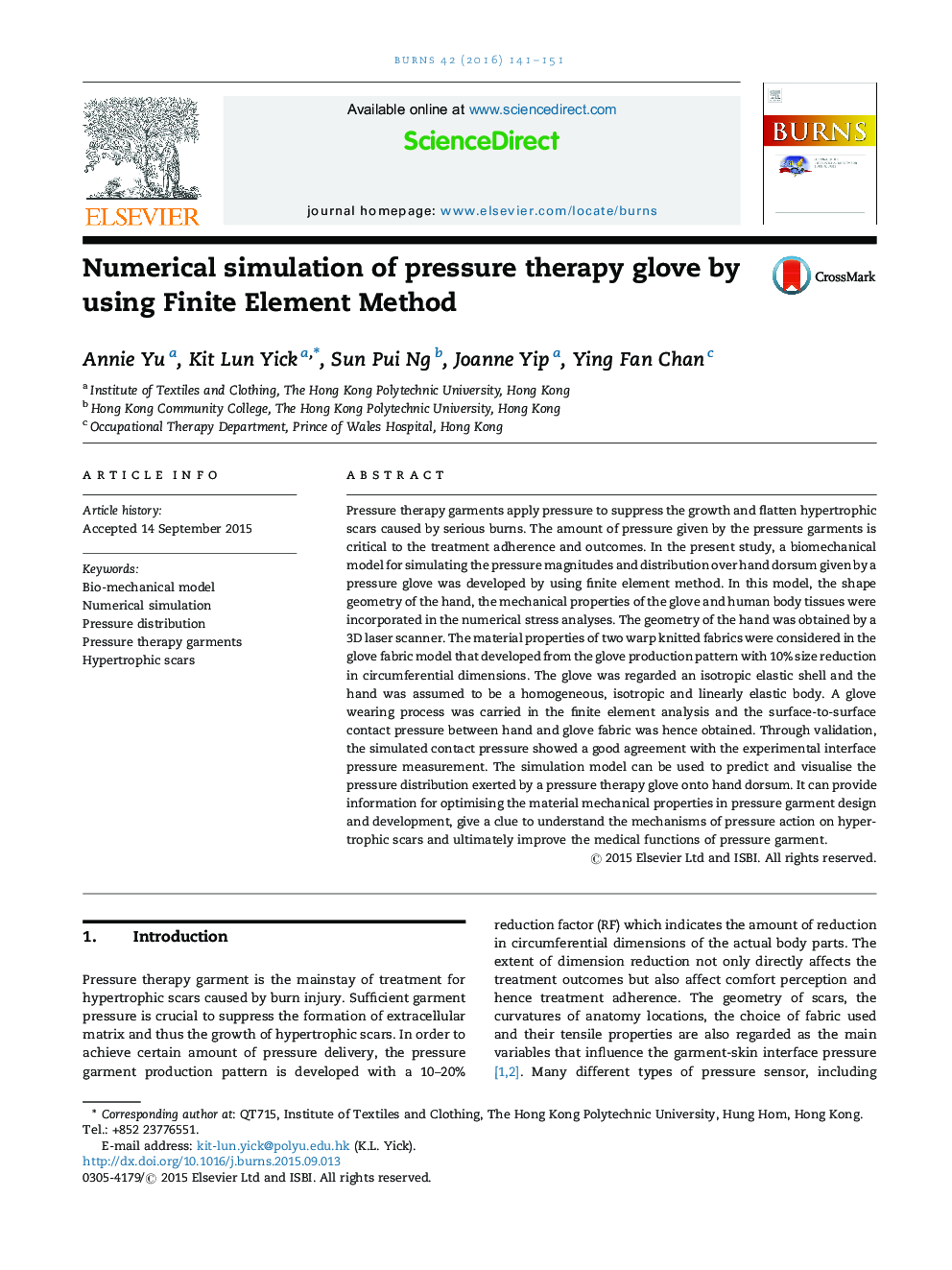| Article ID | Journal | Published Year | Pages | File Type |
|---|---|---|---|---|
| 3104182 | Burns | 2016 | 11 Pages |
•A biomechanical model was built to predict the pressure given by a pressure glove.•Finite element method was used to simulate pressure distribution over hand dorsum.•The simulated pressure shows good agreement with the measured pressure.•The model helps to understand the effect of fabric properties on the pressure delivery.•The model enhances the treatment quality that suitable pressure can be efficiently prescribed.
Pressure therapy garments apply pressure to suppress the growth and flatten hypertrophic scars caused by serious burns. The amount of pressure given by the pressure garments is critical to the treatment adherence and outcomes. In the present study, a biomechanical model for simulating the pressure magnitudes and distribution over hand dorsum given by a pressure glove was developed by using finite element method. In this model, the shape geometry of the hand, the mechanical properties of the glove and human body tissues were incorporated in the numerical stress analyses. The geometry of the hand was obtained by a 3D laser scanner. The material properties of two warp knitted fabrics were considered in the glove fabric model that developed from the glove production pattern with 10% size reduction in circumferential dimensions. The glove was regarded an isotropic elastic shell and the hand was assumed to be a homogeneous, isotropic and linearly elastic body. A glove wearing process was carried in the finite element analysis and the surface-to-surface contact pressure between hand and glove fabric was hence obtained. Through validation, the simulated contact pressure showed a good agreement with the experimental interface pressure measurement. The simulation model can be used to predict and visualise the pressure distribution exerted by a pressure therapy glove onto hand dorsum. It can provide information for optimising the material mechanical properties in pressure garment design and development, give a clue to understand the mechanisms of pressure action on hypertrophic scars and ultimately improve the medical functions of pressure garment.
